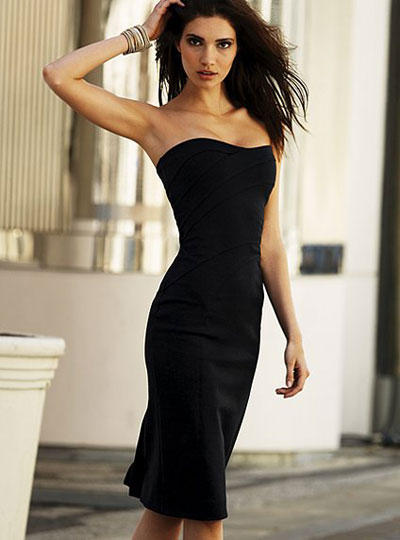
Cocktail dress code is welcome most anywhere but not at business functions
The cocktail dress first arrived on the scene in the 1920s, post-World War, I, when hemlines kept getting shorter and shorter and ladies revealed more skin. This was the era of Prohibition and speakeasies. Women were a lot more daring than they had been before the war, and this was certainly evidenced by the clothing that they were wearing in this time period.
Originally, cocktail dresses were worn by Flappers during the Roaring Twenties. The ?flapper? dresses were waist-less sheaths worn above the knees with gloves and a hat (cloche). Fringe was often attached to the dress.
The dress was adorned with pearls and embroidery and was extravagant. It was imperative that the skirt be a certain length (above the knee) and there were no collar or sleeves. Women generally wore elbow length gloves with cocktail dresses, and their shoes matched the color of their dress.
The cocktail dress for going out later morphed into the ?little black dress,? which, ideally, should be in every woman?s closet. The little black dress, or “LBD” became the easy answer to the question of what is cocktail dress code. The “LBD” was invented by the imitable Coco Chanel. Yes, that?s the same Chanel that created the iconic perfume Chanel No. 5
Actress Audrey Hepburn established the cocktail dress as the go-too dress, wearing it with pearls when she appeared in ?Breakfast at Tiffany?s.?
~
Although cocktail dresses went out of vogue starting in the 1960s, they resurfaced with a passion in the 1990s and continue to be very popular.
A cocktail dress is defined as a short dress made of expensive fabric that is worn to early evening social functions. Cocktail dresses are currently available in a variety of colors and styles, including strapless, halter top, and minis and by no means relegated to black.
There is a cocktail dress code because cocktail dresses are not appropriate for every occasion. A cocktail dress is out of place at a business function, unless it?s an after hours holiday party or something of that nature. Cocktail dresses can be very sexy because they expose a lot of skin, including the legs and arms and, sometimes, cleavage. While sexy is certainly good it may not be the best choice at a professional function.
Cocktail dresses fall under the category of festival attire or creative black tie. The accessories that are worn with cocktail dress are more flamboyant than what a woman would wear with other types of dress-up attire, such as a long formal gown.
In this day and age, a cocktail dress can have sleeves, and it can also be strapless. It can be knee-length or tea length. The fabric is always rich, such as silk. Many women choose to take a wrap (pashmina) with them in case it gets cold or the room is air conditioned. The shawl can cover your bare arms.
If you have been invited to a wedding, it is appropriate to wear a cocktail if it is an informal evening affair. And it?s also okay wear a cocktail dress if it?s a semi-formal evening affair. A short cocktail dress can be worn to a black tie or formal evening wedding, but glam it up with accessories.
When an invitation says, ?black tie? you can wear either a long dress or a cocktail dress. A ?formal? occasion is essentially the same thing as black tie, and it is okay to wear a cocktail dress. At a ?black tie optional? or ?black tie invited? event one can wear a long dress or cocktail dress. A cocktail dress is also appropriate for a semi formal or after five events as well as for an informal affair. Of course, the cocktail dress is perfect when cocktail attire is required.
